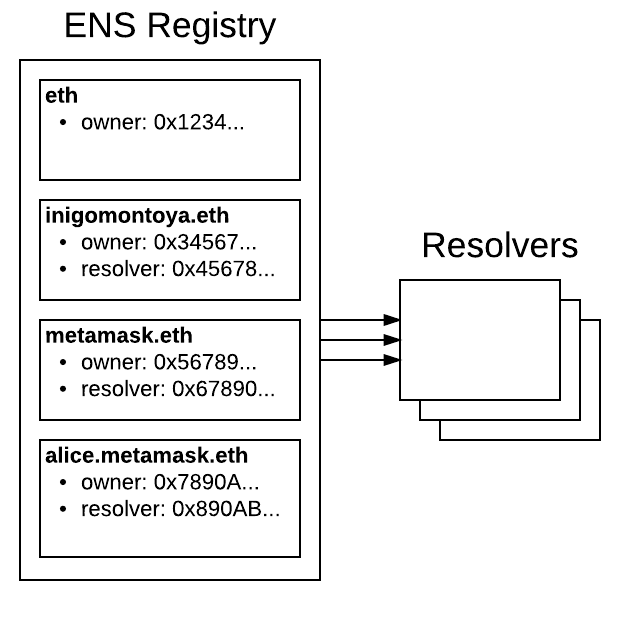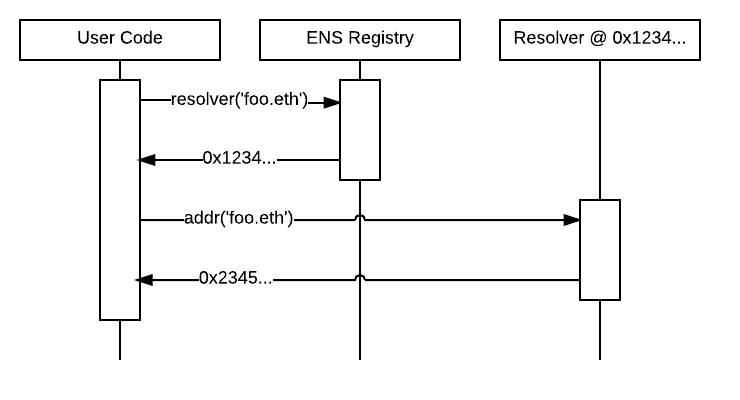What Is The Ethereum Name Service (ENS)?
The Ethereum Name Service (ENS) is an extendible naming system that replaces hard-to-remember crypto addresses with easy-to-remember names. The ENS replaces a long address such as “0x1287fgn74nd736hd673…” with something like “thedistributed.eth”.
The ENS’ goal is to map human-readable names, to machine-readable identifiers, such as addresses, content hashes, and metadata.[1]ENS Docs – Introduction The ENS takes inspiration from the Domain Name Service (DNS), which replaced IP addresses such as “54.753.73…” with easy-to-remember domain names like “thedistributed.co”.
The ENS allows users to send tokens back and forth through their ENS domain rather than their public address, making crypto much more accessible.
How Does The ENS Work?
There are two main components of the ENS, the registry and the resolvers. The registry is a smart contract that keeps a list of every domain and sub-domain along with its owner. The resolver translates the “.eth” names into addresses.[2]ENS Docs – Architecture
ENS domains are represented as non-fungible tokens (NFTs) as any domain isn’t like any other domain. Like traditional domains, there can not be more than one domain of the same word/phrase.
Ethereum uses a hashing algorithm exclusive to the ENS called “namehash”.[3]ENS Docs – Name Processing This converts all ENS domains from English, Arabic, Chinese, etc, to machine language native to Ethereum, allowing for ENS domains to function on the blockchain.


Why Is The ENS Important?
The ENS is a clear point of communication to sail through the sea of long and hard-to-understand addresses on Ethereum. This makes it a platform that is easier to adopt and lowers the chance of sending tokens to the wrong address as it is easier to recognize mistakes in an ENS domain compared to a wallet address.
ENS domains can also be linked with top DNS domains (.com, .org, etc.) and can incorporate IPFS files within them, meaning they can be used in similar ways to current sites. Although there is plenty of UI/UX designing that needs to take place.
References



